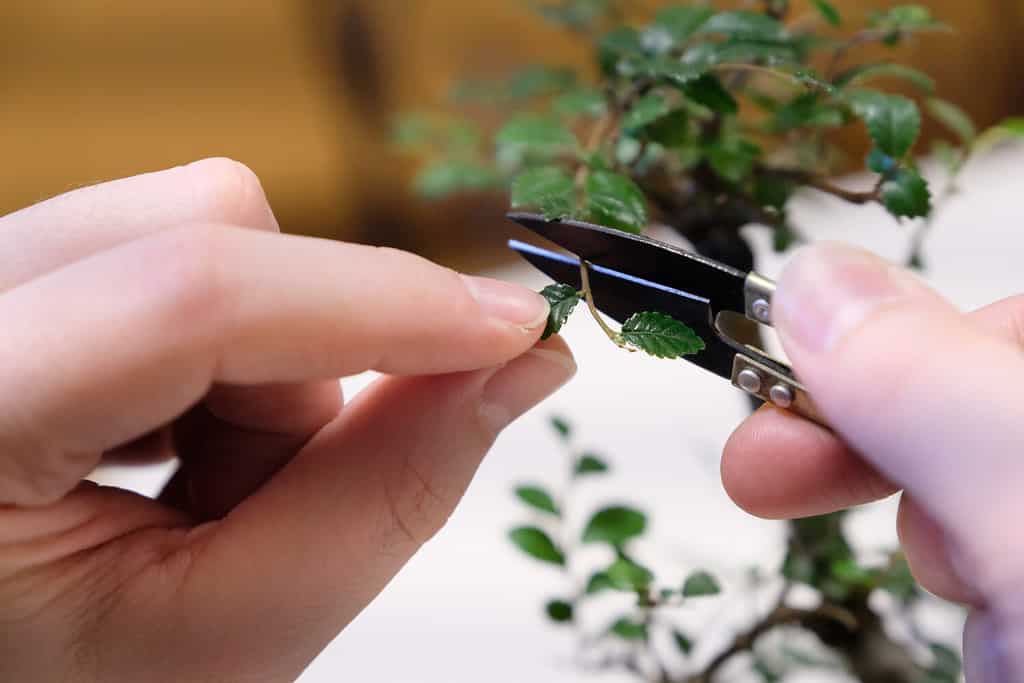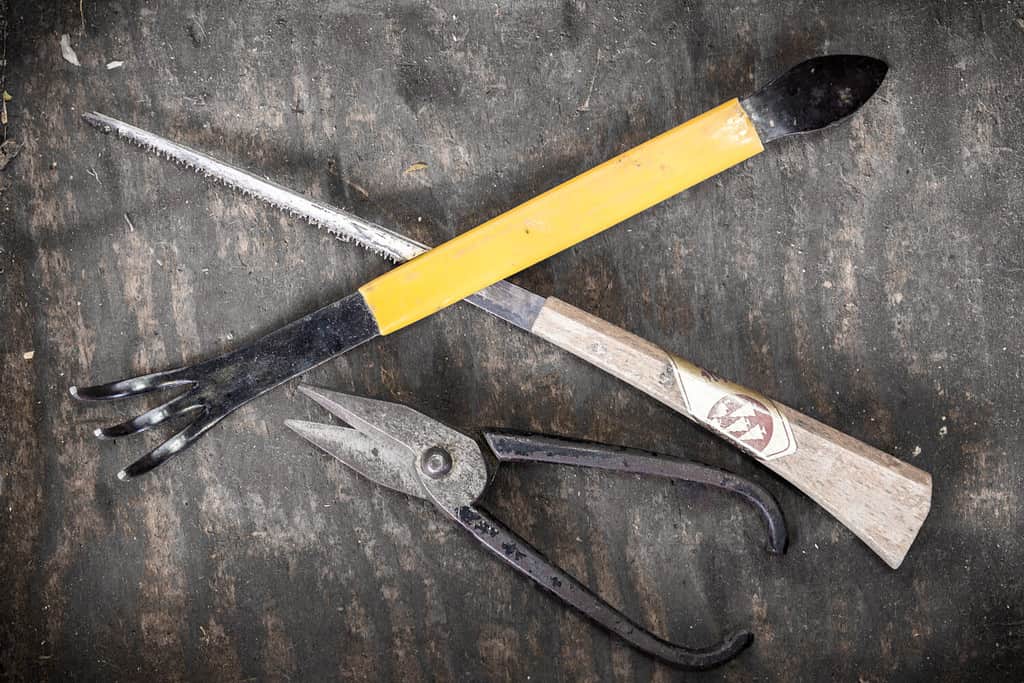If you’re just getting started in the art of bonsai, you may be wondering what tools are best to use when working with your tree. With so many cuts to make, and at so many angles, it can be helpful to expand your bonsai trimming arsenal. While you can usually get by with basic trimming and pruning shears, some specialized tools will make working with your bonsai a breeze.
In this article, we’ll talk about the top 5 tools for bonsai trimming and why you’ll want to have them in your tool roll.
1. Concave Cutter
Concave cutters are an important tool for any bonsai practitioner. These specialized shears allow you to make a clean cut at the very base of a branch when pruning. By making your cut cleanly and at the trunk of the tree, you reduce the potential for scarring and speed up the rate at which the tree will recover. Because these cutters remove the branch entirely, their use also prevents hollow knobs from forming at the cut site.

Concave cutters (left) and knob cutters (right) are bonsai tools specially designed to make cuts close to the tree’s trunk.
©Tree High Bonsai/Shutterstock.com
2. Pruning Saw
Sometimes, your biggest shears or cutters are not the best tools for working with your bonsai. When branches are particularly large, these tools may not be able to cleanly cut at the desired angle. If they aren’t their sharpest, they can also crush or damage your tree’s wood. To cut big branches, as well as very large roots, you may want to use a suitable and ideally very sharp pruning saw.
These saws are available in different sizes and styles. Some are foldable while others are fixed. Which saw you choose ultimately depends on how you work, the size of your tree, and your preference for storage. One thing to note about many purpose-built bonsai trimming saws is that they usually cut on the pull stroke. This is the opposite of Western-style hand saws which cut on the push stroke. Pushing a pull-stroke saw can damage the blade, so be sure you know which type you have!

There are folding and fixed folding saws made for use specifically in bonsai. They are helpful to have when working with larger roots or branches.
©Olena Antonenko/Shutterstock.com
3. Cut Paste
Bonsai trimming is about more than just taking away — it’s also about nurturing what is still there. Cutting away living parts of your tree can be stressful for both you and your plant. After all, it can’t be undone. The cuts can be protected afterward, however.
Bonsai practitioners often use a consumable tool called cut paste to help their trees recover from stressful injuries. After removing a branch, a small ball of cut paste is applied gently to the wound. This seals up the tree’s exposed inner tissue while it recovers. While this isn’t strictly necessary, it’s kinder to the tree and helps ward off possible infection and opportunistic insects. It helps prevent scarring as well and is great when used in conjunction with concave cutters.
Although there are commercially available pastes, you can use beeswax or paraffin wax in a pinch to achieve the same effect.

Bonsai practitioners often use a consumable tool called cut paste to help their trees recover from stressful injuries.
©P-fotography/Shutterstock.com
4. Leaf-Cutters
Defoliation is an important part of bonsai. By removing foliage, you can fine-tune your tree’s shape and also gradually decrease the size of the leaves it produces. Smaller leaves help to create a more realistic miniature of your chosen tree species.
Some bonsai trees, usually conifers, require that you remove their leaves and shoots by pinching. For the rest, you’ll want to take a different approach, instead of cutting the leaves at the base. In those cases, leaf-cutting shears are a great addition to your bonsai trimming tool collection. Their fine-point, tapered blade design, and spring-style handle allow for a much finer, more delicate cut than regular scissors or shears. They also come in a variety of shapes and sizes to help you reach all parts of the canopy.

Because of their blade shape and spring-style handle, this style of leaf cutter enables very fine cuts throughout the canopy.
©Anna Jurkovska/Shutterstock.com
5. Root Rake
Bonsai trimming involves more than just the parts of the tree above the soil. While trimming leaves and branches is crucial to this very visual art, you’ll also need to trim your plant’s roots occasionally. You can, of course, use your fingers or another blunt tool to rake the soil out from between the roots, but having a root rake on hand makes this job much easier.
Root rakes are available in a variety of lengths and widths, though they’re usually fairly narrow and have three bent tines. The tines are splayed out from the center at wide angles. This aids in soil removal while preventing the tool from catching on any of the tree’s delicate roots. Once your tree’s roots are free of soil, you’ll have an easier time seeing exactly what you’re trimming. And, since you’re able to clean the roots faster and more gently, it will cause less stress to your tree.

A root rake is an essential addition to your bonsai tool kit. Having one will make a world of difference when performing repotting tasks.
©CL Shebley/Shutterstock.com
The photo featured at the top of this post is © Olena Antonenko/Shutterstock.com
Thank you for reading! Have some feedback for us? Contact the AZ Animals editorial team.







